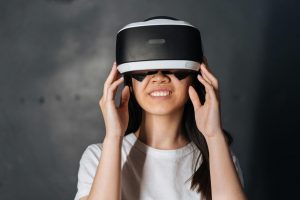Immersive Learning Environments: Engaging Multiple Senses
Immersive learning environments have been gaining popularity in recent years as more educators recognize the benefits of engaging multiple senses in the learning process. While traditional classrooms often relied on visual and auditory methods of instruction, immersive learning allows for a more well-rounded experience that involves touch, sight, sound, and even smell. By stimulating multiple senses, students are better able to retain information and make meaningful connections, resulting in a more enriching and effective learning experience.
The Power of Immersive Learning
In an immersive learning environment, students are fully immersed in the lesson through a variety of methods, such as virtual and augmented reality, interactive simulations, and experiential learning activities. These methods go beyond traditional lectures and textbooks, allowing students to actively participate in the learning process and engage their brains in a more holistic way.
According to a study by the National Training Laboratories, we retain only 5% of what we hear in a lecture, compared to 50-90% of what we learn through hands-on experience. This is because our senses work together to process information and form memories. By engaging multiple senses, immersive learning environments activate different parts of the brain, leading to a deeper understanding and better retention of the material.
Engaging Multiple Senses for Better Learning
Sight
Visuals are a crucial component of immersive learning environments. The use of virtual reality and augmented reality allows students to see and interact with information in a more engaging and impactful way. For example, students can explore ancient civilizations through a virtual tour or analyze complex data sets through interactive visualizations.
Hearing
Sound is also an important sense to engage in the learning process. In traditional classrooms, lectures and group discussions are the main forms of auditory learning. However, in immersive environments, sound can be used in more creative ways. For instance, students can listen to audio recordings or participate in interactive simulations that use sound to enhance the learning experience.
Touch
Incorporating touch into the learning process can improve motor skills and muscle memory, as well as make abstract concepts more tangible. In immersive learning environments, students can use touchscreens, controllers, and other tools to interact with information. For example, students can use haptic technology to experience the texture and weight of objects in a virtual environment.
Smell
While often overlooked, smell is a powerful sense that can evoke emotions and memories. In immersive learning environments, scents can be used to create a more realistic and engaging experience. For instance, students studying biology can use smell technology to recreate the scent of different plants or animals, adding an extra layer of immersion to the lesson.
Real-World Applications
The use of immersive learning environments is not limited to traditional classroom settings. They have also been utilized in various industries, such as healthcare, aviation, and military, to train professionals in a more immersive and hands-on manner. In these fields, it is crucial for individuals to be able to handle real-life situations with confidence and precision, making immersive learning environments a valuable tool.
Furthermore, with the rise of remote and online learning, immersive learning has become even more relevant. Immersive technologies allow for a more engaging and interactive learning experience, bridging the gap between physical and virtual classrooms.
In Conclusion
Immersive learning environments offer a dynamic and effective approach to education by engaging multiple senses and stimulating different areas of the brain. By incorporating virtual and augmented reality, interactive simulations, and other sensory experiences, students are able to learn in a more meaningful and memorable way. As technology continues to advance, the possibilities for immersive learning are endless, and its potential for enhancing the learning experience is truly exciting.










